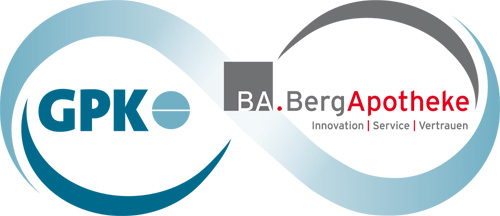Es kommen sicher nicht viele BetriebsmedizinerInnen oder Sicherheitsbeauftragte mit dem Bereich der Raumfahrtmedizin in Berührung. Noch nicht? Auf alle Fälle sind die Fragen nach Möglichkeiten, eine Beeinträchtigung der Muskeln und des Kreislaufs durch die Schwerelosigkeit zu vermeiden, und die nach Ansätzen, wie die Wirbelsäulenbeschwerden bei der PC-Arbeit vermieden werden können, so unterschiedlich nicht.
From bed rest to spaceflight: space medicine and neuromuscular plasticity
Blottner D
Zentrum für Weltraummedizin Berlin, AG Neuromuskuläres System, Arnimallee 22, D-14195 Berlin, Germany
Microgravity-induced body deconditioning and atrophy of the musculoskeletal apparatus severely impairs human performance during Space missions and thereafter. However, impaired performance of astronauts in Space may be prevented by adequate physical countermeasures that must be gravity-independent and that need to be tested before spaceflight under experimental conditions of simulated microgravity on Earth for (i) efficacy to support the musculoskeletal system structure and function, and (ii) feasibility for implementation in future mission plans and schedules. Human bed rest is an accepted analog to real spaceflight and a well-established model in space medicine to study neuromusculoskeletal plasticity and adaptation in healthy volunteers.
We participated in three controlled male and female long-term bed rest studies performed in Europe in the years 20012005. Our major goal was to monitor overall skeletal muscle structure and size as well as to analyse the cellular and molecular composition of muscle cell compartments in biopsy material of male and female volunteers with and without physical exercise programs (i.e., resistive, vibration, aerobic training) during bed rest immobilisation. Our methods included routine immunohistochemistry combined with high-resolution confocal laser microscopy and biochemistry in order to document significant changes of myofiber morphology, type pattern, and muscle protein content. Our studies also focus on changes of signaling protein levels in active versus inactive human skeletal muscle.
We aim to further understand fundamental aspects of skeletal muscle atrophy and to provide morphological and biochemical data confirming efficacy of combined countermeasure programs that need to be developed in space medicine in order to support human performance control in future Space missions.
Muscle tissue perfusion and metabolism after daily whole body vibration training (WVT) during 14 days of head down tilt bed rest.
1Boschmann M, 2Liphardt AM, 1Adams F, 1Gottschalk S, 2Frings P, 2Heer M, 1Luft FC, 1Jordan J
1CRC Franz Volhard and Helios Klinikum, Charité, Universitary Medicine Berlin,
2German Aerospace Center (DLR), Institute of Aerospace Medicine, Cologne, Germany
Aims: Prolonged µG is associated with a loss of bone mass and reduction of skeletal muscle mass and performance. Some of the physiological effects astronauts experience in µG can be simulated by bed rest in 6°-head-down-tilt (HDT). Similar to µG, immobilization during HDT bed rest leads to a lack of mechanical loading in the lower extremities. Although the negative effects on the muscular-skeletal system are known, training methods during space flight still need optimization. Therefore, we tested the hypothesis that daily WVT might prevent these processes by improving muscle blood flow and metabolism during 14 days of HDT.
Methods: Eight healthy male, non-obese subjects were studied at the DLR-Institute of Aerospace Medicine. Each subject received WVT in one phase and a control intervention in the other phase (cross-over design). Each study phase consisted of three periods: 1) 4 days for adaptation, 2) 14 days for intervention at 6°- HDT bed rest and 3) 5 days for recovery. During the intervention period, all activities including eating, showering and weighing were carried out in the 6°-HDT position. Subjects were mobile during adaptation and recovery. Study phases were identical regarding environmental conditions, study protocol and diet. WVT consisted of 5 x 1 minute whole body vibration twice daily on the Galileo 900 vibration plate (20 Hz / 24 mm). At the day before entry into HDT (day 1) and day 13 of HDT, a microdialysis probe was inserted into the right quadriceps femoris muscle (vastus lateralis) and perfused with lactate-free Ringers solution and increasing doses of isoproterenol (ISO, 0, 0.01, 0.1, 1 and 10 µM). Changes in muscle blood flow were monitored by the ethanol dilution technique.
Results: At day 1, ethanol ratio decreased dose-dependently from 0.11±0.01 to 0.06±0.02 whereas dialysate glucose remained unchanged during perfusion with ISO. At the same time, dialysate lactate increased from 1.12±0.08 to 2.66±0.15 mM and dialysate pyruvate from 0.014±0.003 to 0.100±0.008 mM. Dialysate glycerol did not change significantly. At day 13 of HDT, no significant differences for both baseline and ISO induced changes in ethanol ratio and dialysate metabolite concentrations were observed. If subjects received WVT during HDT, baseline ethanol ratio increased to 0.18±0.03 (p<0.01, vs. HDT). However, baseline dialysate metabolite concentrations and relative changes in ethanol ratio and dialysate metabolite concentrations during perfusion with ISO remained unaffected by additional WVT. Conclusions: After 13 days of HDT, baseline and ISO induced changes in muscle blood flow and metabolism remain almost unchanged. However, additional WVT reduces significantly baseline perfusion. But, this reduced tissue perfusion is not limiting for both resting and ISO stimulated muscle metabolism. Schnelle Flüssigkeitsverschiebungen während simulierter und realer Mikro-g-Bedingungen Noack T, Kowoll R, Fraßl W, Koralewski HE, Kirsch KA, Gunga HC Zentrum für Weltraummedizin (ZWMB), Institut für Physiologie, Charité Universitätsmedizin Berlin, Campus Benjamin Franklin, Arnimallee 22, D 14195 Berlin-Dahlem Einleitung: Es ist bekannt, dass bei Astronauten während ihres Aufenthaltes in der Mikrogravitation eine Flüssigkeitsverschiebung (fluid shift) von den Beinen zum Kopf einsetzt und zu einer Änderung der Hautgewebedicken in Form von Schwellköpfen (puffy faces) und Storchenbeinen (stork legs) führt. Diese Änderung der Gewebeschichtdicken lassen sich mit Hilfe nicht-invasiver Ultraschallmesstechnik erfassen und darstellen. Entsprechende Flüssigkeitsverschiebungen (rapid fluid shifts, t ? 25 s) wurden deshalb unter simulierten (Berliner Kipptisch-Versuch) und realen (DLR-Parabelflugkampagnen) Mikro-g-Bedingungen an unterschiedlichen Lokalisationen (Stirn, Schienbein) untersucht. Methodik: Zur Darstellung der Gewebedickenänderung wurden zwei verschiedene Ultraschall-Messverfahren verwendet: Einerseits konnten im Ultraschall-A-Mode die Gesamtgewebedicke bestimmt, andererseits mit Hilfe des zweidimensionalen Ultaschall-B-Mode ein Bild der Gewebeschichten erzeugt werden. Hierbei wurde eine Differenzierung der einzelnen Hautschichten anhand der unterschiedlichen anatomisch-bedingten Verteilung der Extrazellulären Matrix (ECM) ermöglicht. Simulierte Mikro-g-Bedingungen Berliner Kipptisch-Versuch Die Versuche wurden an insgesamt 26 Probanden durchgeführt. Diese Versuchspersonen unterzogen sich einem Kipptisch-Versuch mit einem Lagewechsel zwischen Kopfhochlage (+65°) und Kopftieflage (-5°) zur terrestrischen Simulation des Einflusses von Mikrogravitation auf den Körperkreislauf und die Flüssigkeitsverteilung des Menschen. Während der unterschiedlichen Körperlagen wurden an Schienbein und Stirn die Gewebeschichten ausgemessen und dargestellt. Reale Mikro-g-Bedingungen DLR-Parabelflugkampagnen Im Rahmen dieser Studie wurden 2 Frauen und 7 Männer während Parabelflügen realen Mikro-g-Bedingungen (+Gz-Beschleunigung ca. 102 g) ausgesetzt. Diese wurden im NOVESPACE Airbus A300 Zero-G für eine Dauer von je ca. 22 Sekunden bei insgesamt 30 Parabeln pro Flugtag erreicht. Während der Parabelflüge wurden die Hautschichtdicken am Schienbein und an der Stirn bestimmt. Ergebnisse: Es erfolgten bei jedem Probanden in der Mikro-g-Phase signifikante Änderungen der Gewebeschichtdicke an der Stirn und der Tibia (Einzelfallauswertung, Ultraschall-A-Mode). Jedoch war während der Parabelphasen kein einheitliches Änderungsmuster der Gewebeschichtdicken unter den Probanden zu erkennen. Die zu präsentierenden Einzeldarstellungen lassen derzeit nur optische und somit qualitative Auswertungen zu, zur quantitativen Analyse der B-Mode-Bilder wird derzeit ein Algorithmus erarbeitet. Zusammenfassung: Der bisherige Stand der Untersuchung und Auswertung bestätigt, dass bei Menschen unter Mikro-g-Bedingungen schon innerhalb von nur kurzer Zeit (t ? 25 s) Flüssigkeitsverschiebungen anhand der Gewebedickenänderung an der Stirn messbar sind. Künftige Untersuchungen sollen u.a. in Kombination mit weiteren Verfahren (z.B. PPGI) klären, wie interstitielle und intravasale Flüssigkeitsvolumenanteile verteilt sind. 20-Hz whole body vibration training fails to counteract the decrease in leg muscle performance and volume induced by 14 days of 6° head down tilt bed rest 1Zange J, 1,2Liphardt A-M, 2Schmidt A, 1Müller K, 2Kleinöder H, 1Heer M, 2Mester J 1Institute of Aerospace Medicine, Deutsches Zentrum für Luft- und Raumfahrt, DLR, Linder Höhe, 51147 Cologne, Germany 2Institute of Training Science and Sport Informatics, German Sport University, Carl-Diem-Weg 6, 50933 Cologne, Germany In a recent bed rest study a combination of resistive strength training plus vibration was successfully applied to counteract leg muscle atrophy (Blottner et al. 2006, Eur J Appl Physiol). In the Vibration Bed Rest-study (VBR) we tested whether whole body vibration training (VT) alone has a potential to counteract the decreases in leg muscle performance and volume induced by 14 days of 6° head down tilt bed rest (HDT). In a cross-over design 8 healthy male subjects took part in two study phases. During bed rest each subject performed either VT or the control intervention. VT was performed twice daily on a Galileo 900 vibration plate. During each training session, subjects performed 5 intervals of 1 min vibration (20 Hz / 24 mm) in an upright standing position with 30° knee angle and 15% body weight extra load. Between each interval subjects had a 1 min. break in a seated position. The control intervention included exactly the same procedures except the vibration plate was not turned on. Both study phases were identical with respect to environmental conditions, study protocol, and diet. Maximum muscle force and power of knee extensors and the knee flexors and muscle volumes of upper and lower legs were 1 day before and after bed rest, respectively. In the knee flexors force and power decreased significantly (p < 0.01) during the bed rest. However VT failed to counteract this effect. In the knee extensors both, bed rest and VT did not change muscle performance. After 5 days of recovery in both muscle groups force and power did not return to baseline. Bed rest combined with control intervention caused a significant (P<0.05) decrease in muscle volume in all examined muscle groups measured with MRI. The relative changes for the sum of muscles in both legs was 5.6 ± 1.9% in m. quadriceps, 4.3 ± 2.0 % for the hamstrings, 6.5 ± 2.0 % for the m. triceps surae, and 3.6 ± 2.9 % for the m. tibialis anterior. Vibration training failed to counteract the volume loss. Instead the volume reduction was significantly amplified by VT in the hamstrings. In the chosen protocol whole body vibration at 20 Hz failed to counteract leg muscle atrophy induced by 14 days 6°-HDT bed rest. Application of vibration at different frequencies, amplitudes, and training durations might be more successful. However, safe parameters of whole body vibration without any additional resistive strength training may generally not be intense enough to counteract the responses of skeletal muscle to bed rest. Stable Autonomic Cardiovascular and Respiratory Control during Prolonged Space Flights aboard the International Space Station (ISS) Tank J, Baranov VM, Funtova II, Diedrich A, Pashenko AV, Chernikova AG, Drescher J, Jordan J, Baevsky RM Charité Campus Buch, Wiltbergstr. 50, 13125 Berlin Background Impaired autonomic control could represent a cardiovascular risk factor in persons undergoing long-term spaceflight. Little has been reported on blood pressure (BP), heart rate (HR), and heart rate variability (HRV) during and after prolonged spaceflight. We tested the hypothesis that cardiovascular control remains stable during prolonged spaceflight. Methods and Results Electrocardiography, photoplethysmography, and respiratory frequency (RF) were assessed in five male cosmonauts (age 4150 years, BMI 2228 kg/m²) during long-term missions (flight lengths 162 196 days). Recordings were made 60 and 30 days prior to the flight, every four weeks during flight, and on day 3 and 6 post-flight during spontaneous respiration and controlled respiration at frequencies of 12 and 6 per minute. Orthostatic testing was performed pre- and post-flight. Mean HR, RF, and BP decreased during spaceflight (p<0.05). Total HRV power increased early in flight due to the slow spontaneous RF. HRV in the low and high frequency bands during controlled respiration (12/min) did not change. The maximum HRV reached during controlled respiration (6/min) showed a stepwise decrease during flight and decreased further after flight. The most pronounced changes in HR, BP, and HRV occurred after landing. Only one cosmonaut showed reduced orthostatic tolerance after returning to earth. Conclusions Our data support the hypothesis of an individual central regulatory remodeling during spaceflight and indicates decreased sympathetic activity. The decrease in BP, HR, and RF combined with stable HRV during flight suggest functional adaptation rather than pathological changes. Humane Endothelzellen und simulierte Schwerelosigkeit Ulbrich C, Infanger M, Cogoli A, Grosse J, Bauer J, Witzing A, Grimm D ZWMB Garystr. 5 14195 Berlin, Deutschland Eukaryotische Organismen werden auf der Erde von Gravitationskräften beeinflusst. Endothelzellen stellen aufgrund ihrer tragenden Rolle in der Pathogenese diverser Erkrankungen ein sehr interessantes Studienobjekt dar. Kultivierte Endothelzellen reagieren extrem empfindlich auf Bedingungen der verminderten Schwerkraft. Wir erforschten die Effekte der Klinorotation auf die humane EAhy.926 Zell-Linie. Die Auswirkungen des Vascular Endothelial Growth Factors (VEGF, 10ng/ml) wurden untersucht. Die Dauer der Klinorotation betrug 0, 4h, 12h und 24h. Parallel dazu führten wir eine 10-tägige Langzeitstudie durch. Es wurden immunzytochemische, durchflusszytometrische und Western Blot-Analysen durchgeführt. VEGF verhinderte deutlich die Apoptose von Endothelzellen im Kurzzeitversuch. Im Vergleich zu Vehikel-behandelten klinorotierten Kontrollen wurden aktivierte Caspase-3, Bax und p53 Protein durch VEGF signifikant reduziert. Nach 24h unter Klinorotation formten sich multizelluläre Sphäroide. Mikrogravitation induzierte einen deutlichen Anstieg des Osteopontin Protein-Gehalts nach 24h. VEGF milderte diesen Anstieg erheblich ab. Kollagen Typ I und III waren durch VEGF Behandlung nicht verändert. Nach 10 Tagen fand sich ein Anstieg von Caspase-3, Kollagen Typ I und III. Unsere Ergebnisse zeigen, dass Langzeit-Klinorotation zum Anstieg Extrazellulärer Matrixproteine und zur Apoptose führt. Der dreidimensionale Klinostat repräsentiert ein wichtiges Modell für zellbiologische Experimente unter simulierter Schwerelosigkeit. VEGF mildert bei Kurzzeitgabe die Veränderungen an Endothelzellen, die durch simulierte Schwerelosigkeit induziert wurden, erheblich ab und übt darüber hinaus einen protektiven Effekt auf die Zellen aus. Expression of multidrug resistance proteins in human melanocytic cells under hypergravity Lambers B, Ivanova K, Block I, Gerzer R Institute of Aerospace Medicine, DLR, Linder Hoehe, 51170 Cologne, Germany Human epidermal melanocytes function as a crucial protective barrier against UV radiation and metabolic stress by generating the radical scavenging pigment melanin. They are further able to secrete a wide range of messenger molecules such as guanosine 3´,5´-cyclic monophosphate (cGMP). In melanocytes, cGMP controls the signaling activities of nitric oxide (NO) in relation to melanogenesis as well as melanocyte-extracellular matrix interactions that may play a role in melanocyte pathology (e.g., vitiligo and melanoma metastasis). In previous studies we found that hypergravity may differentially modulate cGMP efflux in normal human melanocytes (NHMs) and melanoma cell lines in the presence of phosphodiesterase (PDE) inhibitors and/or induction of cGMP synthesis by NO. In the present study we investigated the effects of hypergravity on the expression of highly selective cGMP exporters the multidrug resistance proteins (MRP) 4 and 5 in NHMs and melanoma cells (MCs) with different metastatic potential on mRNA levels using semi-quantitative RT-PCR analysis. Hypergravity (up to 5 g for 24 h) was produced by horizontal centrifugal acceleration. For 5-g experiments, the mRNA levels for MRP5 appeared to be increased in NHMs and nonmetastatic MCs in comparison to 1-g controls. Metastatic MCs, in contrary, were insensitive to the hyper-g effects. We further found no differences between 1-g and 5-g treated cells in the expression of mRNAs for MRP4 and other members of the MRP family like ABC-1, MRP1, MRP2, and BCRP. The present results suggest that environment created by centrifugal acceleration represents a new factor for regulating cGMP levels in human melanocytes that involve multidrug resistance proteins. We propose that altered gravity should be regarded as a possible factor that may induce melanocyte alterations under extreme conditions. Future studies on this aspect in microgravity may be important for residents on the International Space Station and astronauts involved in long space flights.







